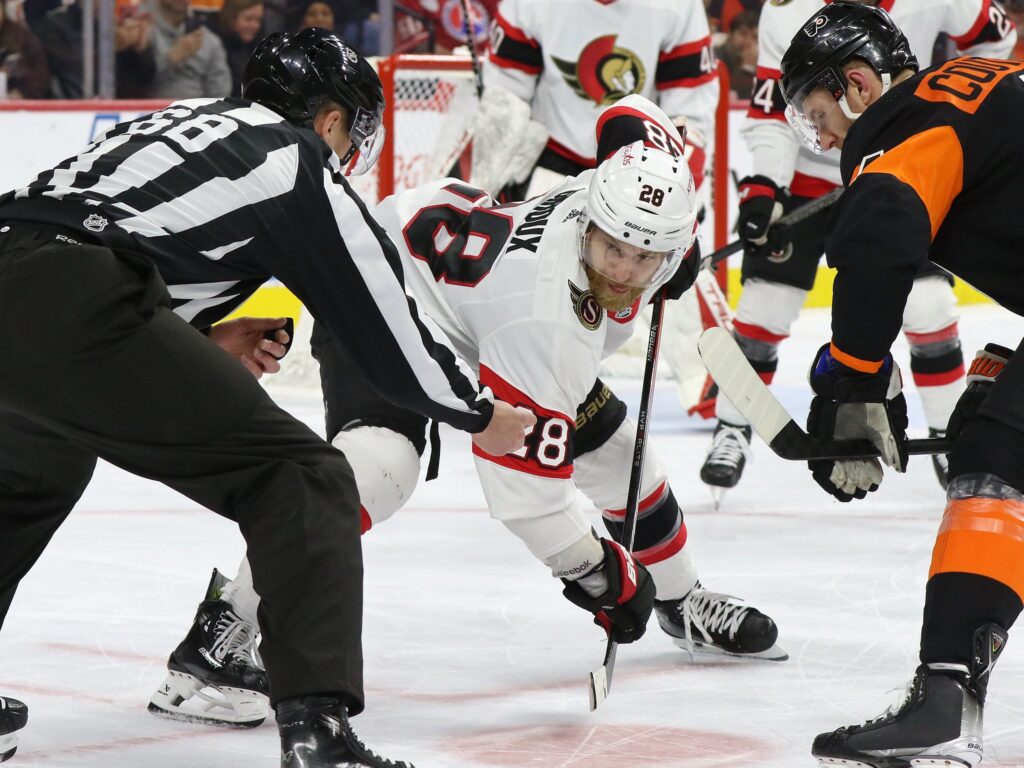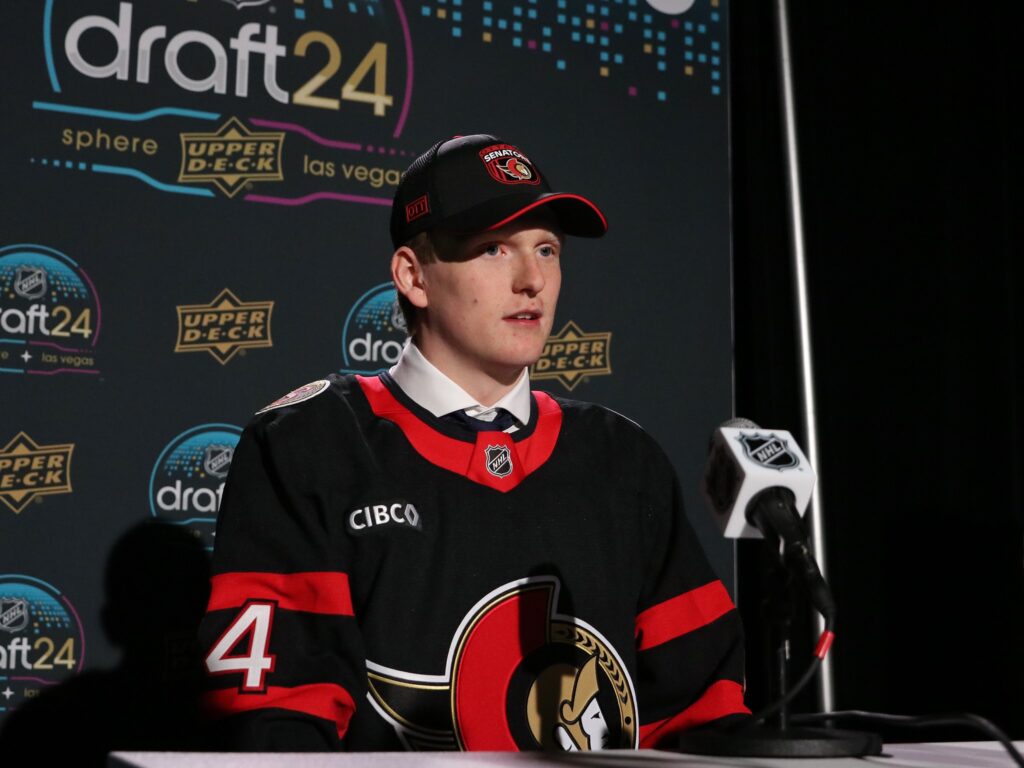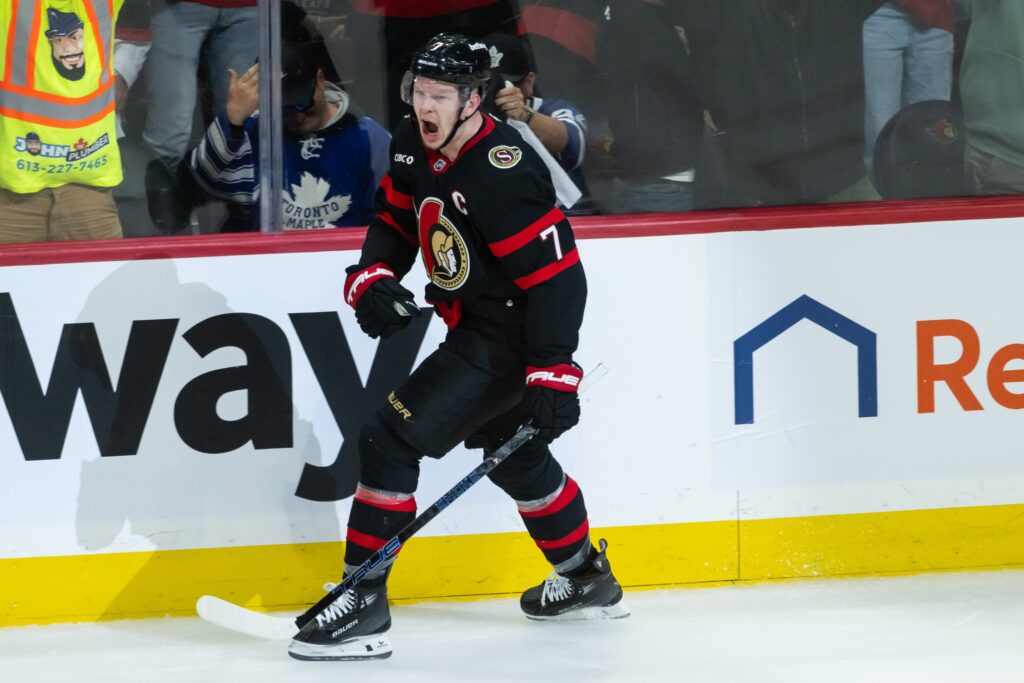As the league’s 5:00 PM deadline came and went this past Monday, the Ottawa Senators’ front office submitted its final 23-man roster. For fans and analysts, the annual roster-setting day is a culmination of training camp battles, preseason performances, and strategic asset management. This year in Ottawa, the final picture is one of impressive depth, calculated patience with a top prospect, and one hard-nosed surprise that signals a potential shift in team identity. While the core of the team was largely predictable, the moves on the periphery speak volumes about the organization’s current strength and future plans.
Previously on the EDGE – Ottawa Senators Enter Training Camp with a Stanley Cup Mindset
The Forwards: One Wrinkle in a Familiar Fabric
Up front, the Senators will ice a group that looks both potent and deep. The top-six is locked in, led by captain Brady Tkachuk and superstar Tim Stutzle. Dylan Cozens at centre and veteran David Perron on the wing provide skill and experience. They join established forces like Claude Giroux and Shane Pinto to create a forward corps that should be able to roll four effective lines.

The bottom-six features a mix of grit, speed, and versatility with players like Ridly Greig, Lars Eller, Fabian Zetterlund, and Michael Amadio. The only real eyebrow-raiser among the 13 forwards who cracked the opening night roster was the inclusion of Kurtis MacDermid. In an era where teams increasingly prioritize speed and skill on the fourth line, rostering a dedicated enforcer is a throwback. However, his presence sends an unmistakable message: the Senators will not be pushed around this season. It’s a clear nod towards adding a layer of toughness to protect the team’s considerable skill.
This group, however, starts the season without a key contributor. Drake Batherson, fresh off a career-high 68-point campaign, was placed on injured reserve after pulling an upper-body muscle. While he’s expected to miss at least the first couple of weeks, his absence created an opportunity. Olle Lycksell, who cleared waivers but remained with the big club, draws in for now, but his hold on that roster spot is tenuous at best.
The Blue Line Conundrum: A Good Problem to Have
If there’s one area where General Manager Steve Staios has an embarrassment of riches, it’s on the right side of his defense. The team will carry seven defensemen to start the year, and the competition for ice time promises to be fierce.
The top pairing of Jake Sanderson and Artem Zub remains the team’s anchor, a formidable duo capable of shutting down the opposition’s best. The second pair sees the veteran Thomas Chabot partnered with Nick Jensen, a steady presence whose quick recovery from off-season hip surgery was a significant development in camp. The initial plan may have been for Jensen to start the year on the sidelines, but his readiness has solidified the top four and created a trickle-down effect for the rest of the lineup.
That effect is felt on the third pairing, where the newly acquired Jordan Spence slots in. Spence was initially seen as an insurance policy for Jensen, but he played his way into a guaranteed spot. He was seen practicing alongside Tyler Kleven, who was subsequently placed on IR to start the year. This leaves Donovan Sebrango and Nikolas Matinpalo as the likely seventh and eighth defensemen, although both are slotting in for the team’s first game against the Tampa Bay Lightning, leaving Spence is on the sidelines. So, that said, this defensive depth is a luxury few teams in the league can boast, and it became the central factor in the organization’s biggest roster decision.
Roster Jujitsu: How the Injured List Shaped the Final 23
Every NHL front office knows that the Injured Reserve list is more than just a place for healing players; it’s a critical tool for roster management. The Senators used it to perfection. By placing Batherson and defenseman Tyler Kleven on IR, they created the flexibility needed to keep players like Lycksell and Sebrango on the NHL roster past the deadline without immediately exposing them to waivers again.
Kleven’s injury, suffered early in the preseason opener, remains undisclosed, but his move to IR was a key piece of the puzzle. It allowed the team to carry seven healthy defensemen without having to make a more difficult decision. The clear, unstated plan is that once Batherson and Kleven are healthy and ready to return, Lycksell and Sebrango are the most likely candidates to be assigned to the AHL’s Belleville Senators. It’s a savvy piece of management that maximizes the team’s depth and keeps its assets within the organization.
Also on the EDGE – Steve Staios’ Quiet Offseason is the Ottawa Senators’ Loudest Statement
The Calculated Decision on Carter Yakemchuk
Perhaps the most discussed move of the preseason was the decision to send Carter Yakemchuk, the seventh overall pick from the 2024 NHL Draft, to Belleville. In many other organizations, a prospect of his pedigree would have been all but guaranteed a spot. However, Staios and the Senators are playing the long game.
The GM noted that the organization’s surprising depth on the right side of the defense, bolstered by Jensen’s health and Spence’s emergence, made this a decision born of strength, not of weakness in Yakemchuk’s game. The gap between Yakemchuk and his peers, Staios suggested, was not large at all. The choice came down to a simple developmental philosophy: is it better for a 19-year-old phenom to play 12-14 sheltered minutes a night in the NHL, or to play 25 minutes a night in all situations—power play, penalty kill, and crucial late-game shifts—in the AHL?

Ottawa has chosen the latter. They are betting that a year of being “the guy” in Belleville will do more for Yakemchuk’s long-term development than a year of being the sixth or seventh defenseman in Ottawa. It’s a mature, patient approach that demonstrates confidence in both the player and the organizational pipeline. Yakemchuk joins a stacked Belleville roster that also includes waiver-cleared players like Arthur Kaliyev, Jan Jenik, and goaltender Mads Sogaard, making the B-Sens a must-watch team in their own right.
The 2025-26 Ottawa Senators roster is set, for now. It’s a team built with clear intention—deep, skilled, and now, tougher. The decisions made at the deadline underscore a management team that is both strategic with its present and patient with its future. The battles for ice time are just beginning, and with top-tier prospects like Yakemchuk waiting in the wings, the internal competition will be a driving force all season long.
Created with the aid of Gemini AI
